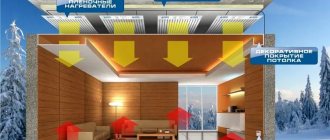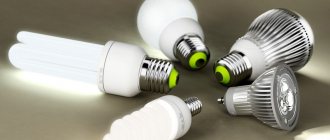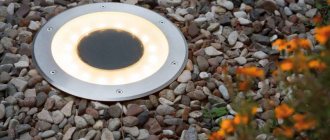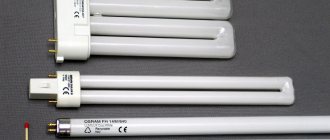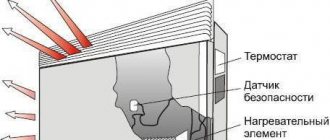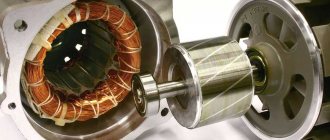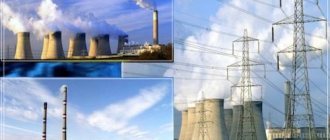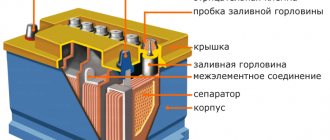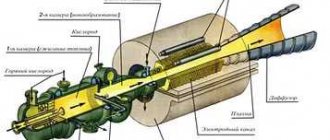Infrared heaters are an innovative technology that uses short-wave infrared radiation to provide an immediate sensation of soothing warmth moments after the device is turned on. Thanks to the use of new technologies, the operation of an infrared heater can enhance the feeling of warmth even in poorly insulated, large rooms and open spaces.
Heating installations equipped with electric infrared emitters make it possible to select specified zones and surfaces in which the feeling of warmth will be several times higher than in the rest of the object.
General operating principle of infrared heaters
Any heating device (heater, heated floor, radiator, convector) warms the room in two ways - using infrared radiation and convection. Depending on the type, their ratio is different:
| Device | Radiation | Convection |
| Radiator | 15-30% | 70-85% |
| Fan heater | 0-10% | 90-100% |
| Warm floor (plinth) | 0-5% | 95-100% |
| Infrared heater | 70-95% | 5-30% |
Infrared light is emitted by any surface. The hotter it is, the more intense the IR radiation. When it hits any object, it heats it up. It begins to give off heat, warming the air in the room. The degree of heating depends on the power of the heater and the distance to it.
An infrared heater emits infrared rays in all directions. They pass through the air without heating it. When thermal radiation hits any surface, it gives off thermal energy. Then it becomes a source of heat.
With convection, the heater heats the air. It spreads throughout the room and gives off its heat to the objects in it. Heating efficiency depends on air flow, room volume and appliance power.
Requirements for the isolator
The insulator is installed between the reflector and the housing. Its main task is to prevent heat from heating the case to critical temperatures. Typically, basalt wool is used as an insulator - it has good thermal insulation properties and is completely environmentally friendly (does not emit harmful substances even when heated to 100 degrees).
Note:
You should not choose heaters that use ordinary mineral wool - when heated, it can release formaldehyde. Check with the seller which insulator is used in the model you like.
Wavelength affects everything
Infrared heaters emit in the range with a wavelength of 0.75-2000 microns and a frequency of 0.15-400 THz. They are divided into three types:
- Short-wave (wavelength 0.75-2.5 microns, frequency 120-400 THz);
- Medium wave (wavelength 2.5-50 microns, frequency 6-120 THz);
- Long-wave (wavelength 50-2000 microns, frequency 0.15-6 THz).
The shorter the wavelength, the more thermal energy the heater produces with the same radiation area. But the temperature of the radiating element is higher.
Short-wave and medium-wave heaters are usually equipped with an open-type heating element. It emits orange light in the visible range. This leads to a loss of effective power (up to 10%).
Long-wave heating elements do not emit visible light. They are usually used in closed-type panel heaters. They have a lower operating temperature and the percentage of thermal energy released due to convection is lower than that of short- and medium-wavelength ones.
The effect of IR radiation depending on the wavelength is described in the section “ Infrared radiation and human health ”.
Case requirements
The housing can be made of steel or aluminum. Aluminum options are nicer but come at a higher price, so choose your heater wisely. Iron is a cheaper material, but in damp rooms it can become corroded, especially on the inside (it is usually not painted). Rust quickly eats through thin metal and comes out, which leads to a deterioration in the aesthetic properties of the lamp.
Modern heaters look quite stylish
Types of heaters
All infrared heaters are divided according to their energy source into:
- Electrical;
- Gas;
- Diesel;
- With a different type of fuel.
Electricity
Electrical IR devices can be divided according to the method of producing thermal radiation and design into:
- Panel;
- Film;
- With open heating element;
- Micathermic;
- Combined;
- Halogen.
Panel heaters produce long-wave radiation. Their surface heats up to +50, less often up to +70 degrees. The heating efficiency depends on the radiation area. Such heating devices are used in residential buildings, apartments, offices, and small premises.
Film IR devices are used in electric floor heating systems. The operating temperature does not exceed +40 °C. Supplied in roll form.
Heaters with open heating elements operate in the short-wave and long-wave ranges. They are the cheapest options. With minimal dimensions they provide powerful heating (operating temperature +600 degrees and above). Such infrared heaters have a large number of pros and cons.
Micathermic devices are no different in efficiency from their analogues. They use mica as the emitting plate. Operating surface temperature up to +60 °C. About 20% of thermal energy is released due to convection, 80% by radiation. You can read more about them in the article Micathermic heater: principle of operation, pros and cons, real reviews and efficiency.
Combined systems - a mixture of a convector and a panel infrared heater. They have 1-3 low-power fans installed, which circulate air along the radiating element. Depending on the model, the share of convection is 20-50%.
Gas
Gas infrared heating devices are divided according to the design of the radiating element:
- Tubular;
- With flat element;
- Vertical compact.
Tubular infrared gas heaters heat up to no more than +250 degrees. The combustion of the gas-air mixture occurs in a tubular element. The device emits in the long-wave range.
Gas IR devices with a flat element are used to heat small areas or rooms. The gas burns in (or near) the perforated ceramic tiles. They emit in the long-wave range, less often in the mid-wave range.
Vertical (compact) IR heaters are a special case for heating open spaces. The gas is burned in a small ceramic chamber that emits infrared rays. They operate in the long-wave or medium-wave range.
Diesel
Diesel IR heaters come in three types:
- Direct heating;
- Indirect heating;
- Tubular.
Direct infrared diesel heaters emit exhaust gases through a radiant grille (disc). The radiation range depends on the model and power of the device, and the degree of heating of the emitter. Used in rooms with good ventilation or outdoors.
Diesel infrared indirect heaters emit exhaust gases through an exhaust pipe - a chimney. They have lower efficiency than models with direct heating. The emission range depends on the degree of heating of the emitting disk or grating. Used indoors.
In diesel IR devices with heating elements, combustion of a mixture of diesel fuel and air occurs in a sealed pipe. They emit in the long-wave, sometimes mid-wave range. They are used for heating premises of any purpose, area and height.
Other
Any type of fuel can be used as an energy source to heat the radiating element. It all depends on the installation model and resource availability. Most often this is:
- Kerosene;
- Eco-diesel;
- Used engine and transmission oil;
- Paraffin.
Installation options
Based on the type of installation, IR heaters are divided into four types:
- Ceiling (suspended);
- Wall-mounted;
- Floor-standing (mobile);
- Skirting.
Each type of heater can be installed in a certain way. This depends on the features of the device and the models produced. Here is a table showing the available installation options for different types of infrared heaters:
| Type of IR heater | Ceiling | Wall mounted | Floor-standing | Skirting |
| Electrical | ||||
| Panel | + | + | — | + |
| Film | + | + | + | — |
| With open heating element | + | + | + | — |
| Micathermic | — | + | + | + |
| Combined | — | + | + | — |
| Gas | ||||
| Tubular | + | + | — | — |
| With flat element | + | + | + | — |
| Vertical compact | + | — | + | — |
| Diesel | ||||
| Direct heating | — | — | + | — |
| Indirect heating | + | — | + | — |
| With tubular emitter | + | + | + | — |
Criterias of choice
To purchase a high-quality unit suitable for a particular home, you need to pay attention to the technical characteristics, as well as the efficiency of the equipment. You can also look at a number of additional functions and the cost of the device
As for the cost, you can choose high-quality models at approximately the same price, which greatly simplifies the choice. If desired, you can find more expensive types of devices equipped with additional functionality.
You need to know that convection and ceramic heaters become ineffective if the house has very high ceilings
This is also worth paying attention to when purchasing.
If the heater needs to be used constantly, then you will need to choose the most powerful models that have a heat sensor, timer, and other useful functions. In this way, system efficiency can be increased and energy consumption can be reduced. But you will have to spend an extra few thousand rubles on such models.
Also, before purchasing, it is advisable to read the reviews of people who have already purchased the equipment and installed it in their home. If a certain model or company has a large number of positive reviews, then this is considered one of the main guidelines when choosing the right unit.
Advantages and disadvantages
Infrared heaters are not a panacea for the cold. They have positive and negative sides.
Pros of IR heaters
#1 Direct heating
Infrared heaters heat the objects they are aimed at. They do not use air as a heat carrier.
No. 2 Fast heating
The equipment reaches operating temperature very quickly. For options with heating elements this happens in a few seconds, for gas and diesel ones – up to 1-2 minutes.
No. 3 No convection
Due to the fact that the air is heated indirectly, from heated objects, there is no convection. Accordingly, the temperature is distributed evenly throughout the room. Heat loss through the walls and ceiling is minimized.
No. 4 Local heating
In larger rooms, infrared heaters can be used to heat specific areas. Other heating devices are ineffective for these purposes.
No. 5 Working in open spaces
It is possible to efficiently heat open areas. Primary heat loss is minimal, since heating occurs due to direct radiation and not from warm air.
No. 6 Silence
If the IR heater is working properly, it operates almost silently. The exception is high-power installations running on gas, diesel or other fuel.
#7 Easy to install and run
To bring the device into working condition, it is enough to connect an energy source (electricity, gas) or pour fuel into the tank. After this, the infrared heater is ready for use.
No. 8 High service life
In IR heaters, the number of moving parts and mechanisms is minimal (unlike air conditioners, heat pumps, and other heating systems). Simplicity reduces the risk of breakage and reduces overall wear and tear.
#9 Environmental friendliness
Electric infrared heaters do not emit harmful substances into the atmosphere. Models powered by gas or diesel fuel are no less environmentally friendly than cars. But they have less harmful emissions.
Cons of infrared heaters
#1 Quick cooling
Unlike other heating systems, IR devices cool down almost instantly. Therefore, you have to constantly monitor the presence of voltage in the network or fuel in the tank.
No. 2 Uneven heating
Infrared thermal radiation heats only the side of the object that it hits. The temperature difference can be significant.
No. 3 Electricity consumption
Unlike air conditioners and heat pumps, the COP (efficiency factor) of electric infrared devices is 95-99%. From 1 kW of electricity they cannot produce more than 0.99 kW of heat. Air conditioners and heat pumps can produce 4 kW of thermal energy or more from 1 kW of power consumed.
No. 4 Dangerous for humans
Failure to comply with the rules for using infrared heaters can lead to illness and disorders. The high temperature of the heating elements, if handled carelessly, can cause injury.
#5 Bright light
Electric infrared heaters with an open heating element emit light in the visible range. This can lead to sleep disturbances.
No. 6 Water ingress
When water gets on hot heating elements, they are destroyed. This may result in short circuit, fire, etc.
No. 7 Fire hazard
Heated radiating elements may cause a fire. Protective grilles cannot always protect them from the ingress of foreign flammable objects.
#8 Reduced effectiveness at a distance
Heating efficiency decreases depending on the distance to the object. The comfort zone is quite narrow and amounts to 1-4 meters depending on the type and power of the heater.
What is the secret of popularity?
Manufacturers declare the following advantages of infrared heaters:
- high efficiency and cost-effectiveness;
- absence of rotating parts and noise;
- a gentle warmth is generated that does not cause a deterioration in a person’s well-being;
- simple installation and connection.
As a rule, these are general phrases; something similar can be found in descriptions of oil radiators or wall-mounted convectors. They do not answer the question: why are devices so attractive to users in real life? It turns out that everything is simple, the operation of a ceiling infrared heater, like a wall-mounted one, is possible in non-insulated buildings, in drafts and even on the street. The main thing is to be within the range of infrared radiation.
A device that emits infrared waves will create a zone of comfortable heat in front of it, leaving the rest of the room unattended. It will warm up after a few hours from heated objects. But the fact remains: in a room where 1 kW of heat is needed for heating, people install a 500 W infrared heater so that the radiant heat is distributed as widely as possible. This creates the illusion of good heating, although in reality the temperature in the room remains dog-like; the laws of physics cannot be fooled.
If heating a room requires 1 kW of heat, then the infrared emitters should be of exactly this power, then there will be no illusions, a comfortable temperature will quickly be established in the entire room.
The devices also have other disadvantages. For example, the design of an infrared heater in a suspended design implies a wasteful consumption of about 10% of the heat accumulating under the ceiling. This is a convective transfer of energy from the heated body of the device to the surrounding air, which remains there, under the ceiling. Various objects interfere with the operation of wall heaters; carbon and halogen heaters are annoying with their bright light, and micathermic heaters are expensive.
Operating principle of gas infrared heaters
In this section we will analyze the design and operating principle of gas infrared heaters of various types.
How does a tubular infrared heater work?
- Burner control unit;
- Reflector plugs;
- Radiating tube brackets;
- Polished aluminum reflectors;
- Maintenance hatch;
- Power connector or cord;
- Glass window for viewing the burner;
- Air intake;
- Ignition unit;
- Tubular emitter.
A tubular gas IR heater works as follows. A mixture of gas (natural or propane) with air enters the tube. It is ignited by the ignition unit, which causes the tube (tubular emitter) to heat up. The heated emitter begins to emit infrared radiation.
Radiation directed upward is reflected by an aluminum reflector. The rest is freely distributed throughout the heated area. Some of the thermal energy warms the air through convection.
Depending on the settings, the gas supply speed or the ignition frequency is adjusted. This affects the temperature of the tube and the length of the emitted waves. The efficiency of heating depends on it.
Operating principle and design of an IR heater with a plate
- Front panel assembly;
- Burner assembly;
- Oxygen sensor assembly;
- Manual gas valve;
- Front grille;
- Rear panel assembled.
The basis of such heating devices is a ceramic or stone plate (or stove). It is located in the burner assembly, or immediately above it, and is the source of IR rays.
The gas-air mixture enters the burner and ignites. Passing through the channels in the stove, it warms it up, and combustion products exit into the room. Thus, part of the thermal energy is transferred by infrared radiation, and a smaller part by convection.
An oxygen sensor is needed to regulate the gas supply rate. In case of its failure, it is possible to manually shut off the gas line.
Vertical (compact) infrared gas heater
- Reflector;
- Radiating element;
- Air access hole;
- Manual gas valve;
- Adapter for connecting the pipeline to the burner assembly;
- Burner assembly fastening coupling;
- base pipe;
- Gas pipeline.
In such gas infrared devices, the burner is located in the radiating element under the reflector (reflector). It is a chamber made of metal or ceramics in which the gas-air mixture burns. Air is taken from the environment.
There is a small distance between the element and the reflector. Combustion products escape through the gap. The radiating element can be monolithic or in the form of a lattice. In the latter case, the device releases up to 40% of the thermal energy through convection.
Such IR devices can be installed in the form of poles, or in a suspended manner. In the second option, it is necessary to arrange an appropriate gas supply.
How does an electric IR heater work?
The basic operating principle of an infrared electric heater is generally simple. But different types have fundamental differences.
Operating principle of panel infrared heater
- Decorative coating;
- A heating element;
- Bracket;
- Side pad.
The heating elements of such devices are made of ceramics or natural stone. They are a plate in which a spiral of nichrome or a metal with similar characteristics is laid. The stove emits infrared rays, a small part of the thermal energy is released due to convection.
Decorative coating is not always present. It can be made of different materials, stylized as an interior element or a painting. The efficiency of heating depends on the level of its thermal conductivity.
Some models have a reflector behind the heating element. It reduces the level of convection and increases the efficiency of infrared heating by 5-30%.
Film infrared heaters
Film IR heaters are used for laying under the coating. Most often, they are used to install warm floors, less often - warm walls. They can only be classified as infrared heating devices only conditionally, based on their operating principle. Read more about them in the article Types of warm electric floors.
Combined IR devices
This type of heaters is a hybrid of panel IR devices and electric convectors. The back of the heating element is blown by small fans, which ensures efficient heat transfer.
Due to forced airflow, the IR radiation/convection ratio changes in favor of the latter. A combined infrared heater warms up the air in the room faster than a regular one.
Operating principle and design of a micathermic IR heater
- Top air outlet;
- Protective grille;
- Micathermic heating elements;
- Digital LED display;
- Control Panel;
- Housing for storing the power cord.
Micathermic infrared heaters are analogues of panel heaters. The difference is that the heat-releasing surface is made of mica. The spiral can be located either inside the mica panel or between two separate sheets.
In the second case, one- and two-component materials are often used on the inside of mica slabs. They provide good absorption of the energy released by the filament.
Micathermic heaters are usually floor-mounted and emit infrared radiation in two directions. There are models in the form of hinged panels and cylindrical shapes. Such heaters are light in weight. They emit up to 80% of thermal energy in the form of infrared rays, the rest is due to convection.
Infrared heaters with open heating elements
- heating element (incandescent filament, heating tube);
- Protective grille;
- Support part;
- Mounting bracket;
- Reflector;
- Device body.
The filament (spiral) in the heating element directly emits in the infrared range. Some of the IR rays go directly into the heated room, and some - due to reflection from the reflector. At the same time, the amount of heat given off due to convection is minimal.
There are two types of heating elements - ceramic and glass. In the first, a ceramic tube is first heated, which subsequently releases heat. In glass heating elements, infrared radiation comes directly from the filament.
Heaters with ceramic elements need some time to reach the specified power. But during operation, such heating elements do not glow as brightly as glass ones. Their radiation wavelength is longer.
What to consider when purchasing
So, you come to the store or read the product specifications on the manufacturer’s website. What to pay attention to and how to make the right choice?
- Check the thickness of the anode (more precisely, the working layer) in the lamp. The critical value is 25 microns. If the layer is thinner, the lamp will quickly fail (limit service life is 3 years). If the layer is more, then the device will work quietly for 5-10 years.
- Heater and housing material. Ordinary metal cannot be used in damp rooms - it will quickly become corroded and fail. Be sure to take this into account when choosing a device for a bathroom, toilet, bathhouse, or sauna.
- Thickness of the working emitter. It is recommended to choose devices with a foil thickness of more than 120 microns. A thinner one does not delay the rays, so they will go in the opposite direction, reducing efficiency and increasing the cost of heating (this parameter is especially critical when installed in suspended ceilings - the rays can simply melt through it).
Design and operation of a diesel infrared heater
In this section you will learn how different types of infrared diesel heaters work. The information also applies to other liquid fuel infrared heating devices. The differences in design are insignificant.
Working principle of diesel direct heating IR heater
- Radiating element (disk);
- casing;
- Pen;
- Protective grille;
- Burner cover;
- Air intake fan;
- Fuel tank;
- Fuel level indicator;
- Gas tank cap;
- Suction pipe;
- Return line;
- Filter element;
- The combustion chamber;
In diesel IR heaters, the fuel element is made in the form of a perforated disk made of ceramic or metal. It is located after the combustion chamber, or is part of it.
When diesel fuel burns, high-temperature exhaust gases are generated. They pass through the holes of the IR emitter and heat it. The radiating element begins to emit thermal energy in the infrared range, predominantly mid-wave.
Heating of areas and premises is carried out due to thermal radiant energy and the heat of exhaust gases. It is advisable to use such heating devices in open spaces, in large rooms with ventilation.
How does an indirect heating IR heater work on a diesel engine?
Indirectly heated infrared diesel heaters do not emit exhaust gases into the heated room. To remove them, an exhaust hole is provided, to which the chimney is mounted.
The radiating element is the wall of the combustion chamber. It is made of ceramic or metal and has no perforations or holes. The element is heated by the temperature generated by the combustion of a mixture of diesel fuel and air. When heated, it emits thermal infrared radiation.
Indirectly heated diesel infrared heaters are less economical than direct ones. Some of the heat leaves along with the exhaust gases. Such devices can be used in any room. The radiation range depends on the heating temperature of the radiating element and the heater model.
Tubular diesel IR heaters
- The combustion chamber;
- Fuel tank;
- Protective grilles;
- Exhaust port;
- Reflectors (reflectors);
- Exhaust pipe.
The main element of a tubular diesel infrared heater is the combustion chamber. It burns a mixture of diesel fuel and air. In this case, a maximum temperature is released. The walls of the chamber heat up and emit thermal infrared radiation.
From the chamber, fuel combustion products pass through the exhaust pipe. it is less heated and does not emit as much IR light as the combustion chamber. Heat transfer also occurs due to convection. Subsequently, the exhaust gases are discharged through the chimney.
Such heating devices are produced in two versions:
- Models that run exclusively on diesel fuel;
- Universal models that run on diesel fuel, kerosene, and oil.
Main manufacturers
The range of modern infrared heaters includes products from several brands that have established themselves in this area as reliable manufacturers. They present devices with different parameters, characteristics and designs.
IR heaters are varied, and the choice is based on the required parameters of the device
Table: manufacturers, features and prices for IR heaters
| Manufacturer | Peculiarities | Minimum price, rub. |
| BALLU | The range includes heaters for industrial and domestic premises. Most of the presented wall and ceiling models. | 650 |
| ALMAC | The largest selection of ceiling models is IR heaters. Products are produced in Russia. | 2 390 |
| TIMBERK | The Swiss brand produces high quality products and has two production bases in different countries. | 530 |
| NEOCLIMA | The international company produces climate control equipment that is as safe as possible for the environment and humans. | 590 |
Infrared radiation and human health
There is a lot of speculation about the benefits and harms of IR heaters for human health. Basically, manufacturers and sellers openly deceive potential buyers . We will talk about the real impact on human health without bias.
Therapeutic effect
Manufacturers of infrared heaters made of natural stone claim their healing and even therapeutic properties. Not a single reliable study has confirmed this. Experts do not deny the benefits of thermal effects on humans in certain cases. But only on the recommendation of a doctor for specific diseases.
Long wave heaters
It is believed that exposure to long-wave infrared heaters is beneficial for humans. The main argument is that the wavelength and frequency of such devices coincide with those emitted by the human body. In practice, this means that long-wave infrared heaters do not harm human health .
Skin cancer
The effects of medium-wave and short-wave IR heating devices have not been sufficiently studied. It is believed that such radiation can destroy the DNA of skin cells. Because of this, mutations can occur that lead to the development of malignant epithelioma (skin cancer). But this has not been confirmed by scientific research .
Colds
The use of infrared heating devices threatens colds - this is a proven fact. And the problem is not the equipment, but the inability to use it correctly . People turn on the IR heater at high power and stay under it for a long time.
The body warms up and the cold is not felt so clearly. If, after a long stay under direct thermal radiation, a person goes into a cold room, he will not feel a sharp temperature change . And the cooling of the body will take its course. In such a situation, the risk of catching a cold or catching an infection increases significantly.
Regular ailments
They occur if a person stays under a ceiling-mounted infrared heater for a long time. Because of this, the upper part of the body warms up much more than the lower part. To warm up the legs, the heart begins to pump blood through the vessels faster.
The heart cannot pump blood to each part of the body separately. Therefore, blood circulation in the brain also increases. When this happens for a long time, you will begin to feel tired, drowsy, unable to concentrate, and a decline in mental abilities .
Sleep disorders
If you sleep with an IR heater on and an open heating element, this will negatively affect the quality of your sleep. The emitting element glows quite brightly, and the presence of a light source impairs the production of melatonin, the sleep hormone. As a result, you will get worse sleep.

